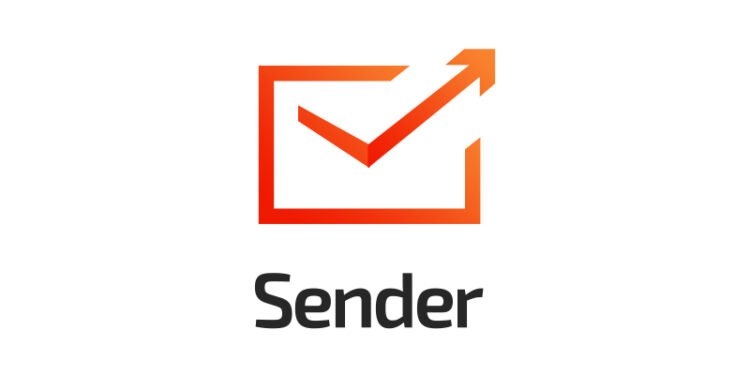What does it take to become a successful sender, and how can you ensure your messages reach their intended recipients? A sender reputation is akin to a credit score, significantly affecting email deliverability. With a strong sender reputation, you can increase open rates by 20% to 30% and improve conversion rates by up to 10%. As an email sender, understanding the importance of sender reputation and how to maintain a high score is crucial for effective communication.
High sender reputation leads to better inbox placement, while poor sender reputation can result in emails being blocked or landing in spam. Mailbox providers assess reputation based on metrics including bounce rates, complaint levels, and engagement rates. Consistently positive email engagement can lead to a 50% increase in click-through rates. As a message sender, it’s essential to monitor your sender score and maintain a high reputation to ensure your emails are delivered effectively.
Key Takeaways
- A strong sender reputation is crucial for maintaining high conversion rates and improving email deliverability.
- Monitoring your sender score and maintaining a high reputation can increase open rates and click-through rates.
- Implementing SPF, DKIM, and DMARC authentication can reduce the likelihood of being marked as spam and enhance sender reputation.
- Permission-based email marketing leads to increased engagement and higher ROI.
- Personalized emails can improve click-through rates and conversion rates, making them an effective strategy for email senders.
- Regular monitoring of bounce rates and spam complaints can prevent declines in sender reputation and ensure effective email communication.
What is a Sender?
A sender is an individual or group responsible for initiating communication in the communication process. The role of the sender is crucial in setting the tone and expectations of communication. According to Connor Covart, effective cold emailing emphasizes the role of senders in communication, highlighting the importance of clear and concise messages to reduce the risk of misinterpretation.
Research suggests that unclear messages may lead to unintended responses from the audience. Identifying key sender roles includes selecting the message type, analyzing the receiver, using the you-viewpoint, encouraging feedback, and removing communication barriers. A package sender, for instance, must ensure that the sender information and sender details are accurate to facilitate successful delivery.
The effectiveness of communication largely relies on the receiver’s analysis of the sender’s message. Credibility perception can cause the audience to reverse their understanding of the message, referred to as the boomerang effect, particularly when the sender’s credibility is low. As Baxter highlights, the significance of senders in mass email communication cannot be overstated, and understanding the role of a sender is essential for conveying information, promotions, or updates efficiently.
In the context of email communication, the sender header identifies who submitted the message, while the Return-Path header indicates where non-delivery receipts are sent. A sender can be an individual or a group of individuals, and their reputation and perceived traits can affect the interpretation of their message. By understanding the importance of sender details and sender information, individuals can improve their communication skills and become more effective package senders.
Understanding the Mechanics of Sender
To effectively communicate, it’s essential to understand the mechanics of a sender, including how they operate and the key components involved. A sender is an individual or entity that initiates a message, and their contact information, such as a sender address, plays a crucial role in ensuring the message is delivered to the intended recipient. In the context of email marketing, platforms like Baxter simplify the process of sending mass emails by providing tools to manage sender contact and address information.
When it comes to the mechanics of senders, it’s important to consider the various technologies used to facilitate communication. This includes email service providers, messaging apps, and other digital platforms that enable senders to reach their intended audience. By understanding how these technologies work and how to effectively use them, senders can improve the chances of their message being delivered and understood by the recipient.
In addition to understanding the mechanics of senders, it’s also important to consider the importance of having accurate and up-to-date sender contact and address information. This ensures that messages are delivered to the right person and that the sender can receive feedback and responses from the recipient. By streamlining the sending process and using the right technologies, senders can improve the effectiveness of their communication and build stronger relationships with their audience.
Key Components of a Sender
The key components of a sender include the individual or entity initiating the message, the message itself, and the medium used to transmit the message. In the case of email marketing, the sender is typically a company or organization, and the message is the content of the email. The medium used to transmit the message is the email service provider, which enables the sender to reach their intended audience.
Common Technologies Used
Common technologies used by senders include email service providers, messaging apps, and other digital platforms. These technologies enable senders to manage their sender contact and address information, create and send messages, and track the delivery and response rates of their messages. By leveraging these technologies, senders can improve the effectiveness of their communication and build stronger relationships with their audience.
Choosing the Right Sender for Your Needs
When selecting a sender, it’s essential to consider factors such as ease of use and features. Baxter offers guidance on choosing the right mass email sender, highlighting the importance of sender verification and sender tracking in ensuring the delivery and engagement of sent messages.
Factors to Consider
A large number of potential readers first look at the sender name to decide if they will open an email. Consistency in sender name and address contributes to greater recognition and trust, leading to a more positive customer experience. Using descriptive sender addresses can help readers immediately recognize the purpose of the communication and its relevance.
Popular Sender Options
Research indicates that the trust and recognition of the sender is the most important factor influencing email open rates. Unique sender addresses linked to a reliable business domain can enhance recipient recognition. Different sender names can effectively differentiate between various categories or types of email communications, improving clarity and engagement.
Comparing Features and Functionality
More effective email marketing requires avoiding no-reply addresses, as such practices can diminish customer rapport and increase the perception of being unapproachable. A/B testing different sender data can help identify the most effective options for open rates, although inconsistency should be avoided as it may damage reader trust. By considering these factors and using sender verification and sender tracking, you can choose the right sender for your needs and improve the effectiveness of your email marketing campaigns.
Setting Up Your Sender
To set up your sender, whether it’s an email sender or a message sender, you’ll need to follow a series of steps. Baxter provides a step-by-step guide on setting up its platform for mass email sending, which can be a useful resource. The process typically involves configuring your account settings, verifying your domain, and setting up authentication protocols such as SPF and DKIM.
When setting up your sender, it’s essential to have the necessary equipment and tools. This may include a reliable internet connection, a computer or mobile device, and software or platforms specifically designed for email or message sending. Additionally, you’ll need to ensure that your sender domain has valid forward and reverse DNS records, and that you’re using a secure connection to prevent spam and phishing attacks.
Step-by-Step Setup Guide
A step-by-step setup guide can help you navigate the process of setting up your sender. This may include instructions on how to configure your account settings, set up authentication protocols, and test your sender to ensure it’s working correctly. By following a step-by-step guide, you can ensure that your sender is set up correctly and that you’re able to send emails or messages efficiently and effectively.
Necessary Equipment and Tools
In addition to a reliable internet connection and a computer or mobile device, you may need specialized software or platforms to set up and manage your sender. This may include email marketing software, message sending platforms, or other tools designed to help you manage your sender and send emails or messages to your recipients.
Troubleshooting Common Issues
When setting up your sender, you may encounter common issues such as authentication errors, spam filters, or delivery problems. To troubleshoot these issues, you can refer to the setup guide or contact the support team for assistance. By troubleshooting common issues, you can ensure that your sender is working correctly and that you’re able to send emails or messages to your recipients without any problems.
Best Practices for Using a Sender
To get the most out of your sender, it’s essential to follow best practices that ensure efficient use, reliability, and accuracy. According to Connor Covart, effective cold emailing relies on personalization and engagement strategies, which can be achieved by optimizing sender information. This includes using a recognizable brand name in the sender field, as unrecognized names can lead to emails being immediately discarded.
Using a subdomain for sending emails can provide added flexibility and separation, especially for medium to larger organizations. This approach allows for up to 5 different email services to be authenticated without affecting the main domain’s settings. However, it’s crucial to maintain consistency in the sender name and email address to avoid confusing recipients and triggering spam filters. A matching “From” address and display name can improve open rates among recipients by enhancing trust.
When using a sender, it’s vital to ensure reliability and accuracy by authenticating email services and maintaining compliance with regulations. This includes avoiding free B2C webmail addresses and using a primary website domain or close subdomain in the “From” address. By following these best practices and optimizing sender information, you can improve email deliverability rates and engagement, ultimately achieving better outcomes with your sender.
Tips for Efficient Use
Creating distinct “From” addresses can aid in audience understanding of email content and purpose. For example, differentiating marketing from support queries can help recipients quickly identify the purpose of the email. Additionally, using a person’s name in the email sender field can be effective if it’s relevant to the brand or a specific message.
Ensuring Reliability and Accuracy
Regularly monitoring and updating sender information can help prevent delivery issues and maintain compliance with regulations. This includes keeping track of spam reports and adjusting email content and sender names accordingly. By prioritizing reliability and accuracy, you can build trust with your recipients and improve the overall effectiveness of your sender.
Maintaining Compliance with Regulations
Staying up-to-date with the latest regulations and guidelines is crucial for maintaining compliance and avoiding potential penalties. This includes adhering to guidelines for sender information and email content, as well as ensuring that recipients have opted-in to receive emails from your sender. By prioritizing compliance, you can protect your brand’s reputation and maintain a positive relationship with your recipients.
Advanced Sender Features and Techniques
To take your email sending to the next level, it’s essential to explore advanced sender features and techniques. One key aspect is leveraging automation to streamline your sending process. By automating routine tasks, you can focus on more critical aspects of your email campaigns, such as crafting compelling content and analyzing performance metrics. For instance, setting up automated email sequences can help you nurture leads and build stronger relationships with your subscribers.
Another crucial aspect is customization. By using dynamic sender details, you can personalize your emails to each recipient, increasing the likelihood of engagement. This can be achieved by using custom fields to vary the sender information for each contact. Furthermore, including a clear sender contact can help build trust with your recipients, making them more likely to engage with your content. According to recent data, personalization in emails can lead to increased open rates and click-through rates, ultimately enhancing deliverability performance.
In addition to automation and customization, integrating your sender with other tools can also enhance functionality. By connecting your email service provider with other marketing tools, you can create a seamless workflow and gain deeper insights into your campaign performance. For example, integrating your sender with a CRM system can help you track subscriber interactions and tailor your content to their specific needs. By leveraging these advanced features and techniques, you can optimize your sender details and sender contact to achieve better performance and drive more effective email campaigns.
Measuring Sender Performance
To improve outcomes, it’s essential to track and analyze sender performance. According to Baxter, sender verification and sender tracking are crucial components of this process. By monitoring key metrics, senders can identify areas for improvement and make data-driven decisions to optimize their strategies.
Key metrics to track include email open rates, click-through rates, and conversion rates. These metrics provide insight into the effectiveness of sent messages and help senders refine their approaches. For instance, a low open rate may indicate that subject lines or sender names need to be adjusted. By analyzing these metrics, senders can adjust their sender verification and sender tracking strategies to improve delivery rates and engagement.
By leveraging data and analytics, senders can identify issues such as high complaint sources or spam traps that could hinder email delivery. Improved sender scores, which are calculated based on a rolling 30-day average, correlate with a better chance of email acceptance by mailbox providers. By focusing on sender verification and sender tracking, senders can optimize their performance and achieve better outcomes.
Effective sender tracking involves monitoring metrics such as bounce rates, spam complaint rates, and email list growth rates. By analyzing these metrics, senders can refine their strategies and improve their overall performance. With the right approach to sender verification and sender tracking, senders can enhance their reputation, increase engagement, and drive better results.
Troubleshooting Common Sender Problems
When using an email sender or package sender, issues can arise that hinder the sending process. Identifying these problems early on is crucial to prevent delays or losses. Common issues with senders include faulty connections, damaged wiring, or calibration problems. These issues can lead to inaccurate readings or signal disruptions, which can have significant consequences, especially in industries like aviation.
For instance, a defective fuel sender can cause the fuel quantity indicator to oscillate or fluctuate, leading to confusion for pilots. Similarly, traditional senders can experience wear and tear on moving parts, resulting in signal disruptions over time. To troubleshoot these issues, it’s essential to understand the common problems that can arise with email senders or package senders.
Identifying Common Issues
Discrepancies between the fuel quantity indicator and the fuel flow indicator can signal potential issues with the fuel sender. A faulty fuel sender providing inaccurate readings can lead to operational inefficiencies and increased safety risks for pilots. Electrical faults, such as loose connections or damaged wiring, can create intermittent signal loss, particularly during flight.
Effective Solutions
To resolve these issues, it’s essential to consult slagging guides, such as those offered by Baxter, which provide troubleshooting guides for common issues encountered during mass email sending. By following these guides, users can identify and fix problems with their email sender or package sender, ensuring that their sending process runs smoothly and efficiently.
Enhancing Security with Your Sender
As Connor Covart emphasizes, security is a critical aspect of cold emailing, and robust security measures are essential to protect sensitive information. When using a sender, it’s crucial to prioritize security to prevent data breaches and maintain the trust of your recipients. This involves being mindful of sender information and sender details, ensuring that all data handled is secure and compliant with relevant regulations.
A key aspect of enhancing security with your sender is to implement best security practices. This includes regularly updating passwords, utilizing authentication protocols such as SPF, DKIM, DMARC, and BIMI, and being cautious when handling sender information and sender details. By taking these precautions, you can significantly reduce the risk of cyberattacks and protect your sender reputation.
Importance of Security Measures
Security measures are vital in preventing spoofing emails, spam messages, and phishing attacks. With the monthly average of spoofing emails expected to reach 30,000 in 2024, and spam messages constituting over 46.8% of email traffic globally, it’s essential to prioritize security. By implementing robust security measures, you can protect your sender information and sender details, ensuring that your emails are delivered safely and efficiently.
Keeping Your Data Safe
To keep your data safe, it’s essential to be aware of the potential risks and take proactive measures to mitigate them. This includes regularly verifying email lists, utilizing double opt-ins, and monitoring sender reputation. By taking these steps, you can ensure that your sender information and sender details are secure, and your emails are delivered to the intended recipients without being flagged as spam.
Sender Regulations and Compliance
Complying with sender regulations is crucial to avoid legal issues and maintain a good reputation. As of February 2024, Gmail requires senders of 5,000 or more messages per day to authenticate outgoing email, emphasizing the importance of . Bulk senders, defined as those sending close to 5,000 messages or more to personal Gmail accounts within a 24-hour period, must adhere to specific guidelines.
Ensuring compliance involves implementing sender tracking and authentication protocols, such as SPF, DKIM, and DMARC. Failure to comply can result in error codes, including 4.7.23, 4.7.27, and 4.7.29, and may lead to messages being delivered to spam folders or rejected. The CAN-SPAM Act also imposes penalties of up to $53,088 for each separate email in violation, highlighting the need for businesses to honor opt-out requests and provide clear opt-out mechanisms.
Overview of Relevant Laws
Relevant laws, such as the CAN-SPAM Act, require businesses to comply with specific regulations, including honoring opt-out requests within 10 business days and providing opt-out mechanisms for at least 30 days after sending a marketing email. Sender verification and sender tracking are essential in ensuring compliance with these regulations and avoiding penalties.
Ensuring Compliance
To ensure compliance, businesses must implement robust authentication protocols and monitor their compliance status through tools like Postmaster Tools. By doing so, they can maintain a good reputation, avoid legal issues, and ensure effective delivery of their messages.
Future Trends in Sender Technology
As technology continues to evolve, the role of the sender in communication is becoming increasingly important. According to Baxter, future trends in sender technology will be shaped by innovations such as artificial intelligence and machine learning. These advancements will revolutionize the way messages are sent and received, enabling email senders to create more personalized and effective campaigns.
A key area of focus for message senders will be the use of AI-powered tools to optimize email marketing strategies. With the average ROI for email marketing standing at 36:1, it’s clear that email senders who leverage these technologies will be well-positioned for success. Additionally, the adoption of DMARC protocols and advanced authentication measures will help to prevent phishing attacks and ensure high deliverability rates.
As we look to the future, it’s likely that we’ll see a greater emphasis on automation and personalization in email marketing. With 35% of marketers listing the creation of more automated emails as their top priority, it’s clear that email senders will need to adapt to these changing trends in order to remain competitive. By staying ahead of the curve and embracing new technologies, senders can ensure that their messages are delivered effectively and efficiently, ultimately driving better results for their campaigns.
Innovations to Watch
Some of the key innovations to watch in the field of sender technology include the use of machine learning algorithms for spam detection and the increasing importance of engagement metrics such as open rates and click-through rates. As email providers continue to evolve their authentication measures, email senders will need to stay up-to-date with the latest developments in order to maintain high deliverability rates.
Conclusion and Next Steps
As we conclude our journey through the art of mastering package senders, it’s essential to recap the key points covered in this comprehensive guide. We’ve explored the importance of senders, the mechanics behind their operation, and the various factors to consider when choosing the right sender for your needs. Additionally, we’ve delved into best practices for setup, usage, security, and compliance to ensure efficient and effective communication strategies.
Recap of Key Points
Throughout this guide, we’ve emphasized the critical role that package senders play in modern communication. From understanding the definition and types of senders to leveraging advanced features and troubleshooting common issues, we’ve provided you with the necessary knowledge to become a proficient sender user. By maintaining a focus on package sender, sender information, and sender details, you’re now equipped to enhance your communication efforts and elevate your professional presence.
Additional Resources for Learning
While this guide has covered a wealth of information, the world of package senders is continuously evolving. To stay ahead of the curve, we encourage you to explore additional resources, such as industry blogs, online tutorials, and professional development courses. By continuously expanding your knowledge and staying up-to-date with the latest trends and best practices, you’ll be able to unlock the full potential of your package sender and deliver exceptional results.
Encouragement to Master Your Sender Skills
The journey to mastering package senders may seem daunting, but with the knowledge and strategies provided in this guide, you are well on your way to becoming a communication powerhouse. Remember, consistent practice and a willingness to adapt to the changing landscape are key to honing your sender information and sender details skills. Embrace the challenges, stay curious, and continually refine your approach – the rewards of effective communication will undoubtedly follow.
FAQ
What is a sender?
A sender is the individual or entity responsible for initiating and transmitting a message, package, or communication to a recipient. Senders play a crucial role in the effective and efficient exchange of information, promotions, or updates.
What are the different types of senders?
The main types of senders include email senders, who send electronic messages, and package senders, who facilitate the physical delivery of packages. Each type of sender has specific roles and responsibilities in ensuring successful communication.
How do senders operate and what are their key components?
Senders typically utilize various technologies and platforms to manage the sending process, such as email sender platforms like Baxter. Key components of a sender include the sender’s contact information, sender address, and the methods used to verify the sender’s identity and track the message or package delivery.
What factors should I consider when choosing a sender for my needs?
When selecting a sender, it’s important to consider factors like the popularity and reputation of the sender options, their features and functionality, as well as the availability of sender verification and sender tracking capabilities to ensure reliable delivery and engagement.
How do I set up a sender for my communication needs?
Setting up a sender typically involves acquiring the necessary equipment and tools, such as email sender platforms or package shipping services, and then following a step-by-step process to configure the sender. It’s also important to troubleshoot any issues that may arise during the setup process.
What are the best practices for using a sender effectively?
Best practices for using a sender include ensuring efficient and reliable use, maintaining accuracy, and adhering to regulations and guidelines to avoid issues like spam filters. Personalization and engagement strategies can also help optimize the sender’s effectiveness.
What are some advanced sender features and techniques?
How can I measure the performance of my sender?
Measuring sender performance involves tracking key metrics, analyzing the effectiveness of sent messages, and making data-driven improvements to sender verification and sender tracking strategies for better delivery rates and audience engagement.
How can I troubleshoot common sender problems?
Troubleshooting common sender problems, whether with email senders or package senders, often involves identifying the root cause of the issue and implementing effective solutions. In some cases, seeking professional help may be necessary to resolve more complex problems.
How can I enhance the security of my sender?
Enhancing sender security involves implementing robust security measures, following best practices, and protecting sensitive sender information and sender details to ensure the safety of your data during the sending process.
What are the regulations and compliance requirements for senders?
Sender regulations and compliance involve understanding relevant laws, ensuring adherence to these regulations, and maintaining sender verification and sender tracking procedures to avoid legal issues and consequences of non-compliance.
What are the future trends in sender technology?
Future trends in sender technology include advancements in AI and machine learning, leading to improved automation, personalization, and predictive capabilities. These innovations have the potential to revolutionize the way messages and packages are sent and received.





